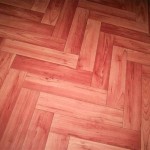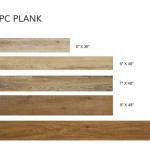How To Paint Old Linoleum Flooring
Painting old linoleum flooring can be a cost-effective way to revitalize a space. While linoleum is a durable material, it can become worn, faded, or simply outdated over time. Painting offers a simple solution to update the look and feel of your floors without the need for a complete replacement. This guide will provide step-by-step instructions on how to paint linoleum flooring, ensuring a successful and long-lasting finish.
Preparing the Linoleum Surface
The success of painting linoleum flooring hinges on thorough preparation. A properly prepared surface ensures proper adhesion and a smooth, even paint finish. Begin by clearing the area of any furniture or obstructions. Following these steps will ensure your linoleum is ready for painting:
- Clean the floor: Thoroughly clean the linoleum with a mild detergent and warm water. Remove any dirt, grease, or grime that could interfere with paint adhesion. Pay close attention to stubborn stains, scrubbing them with a non-abrasive cleaning agent. Allow the floor to dry completely.
- Repair any damage: Inspect the linoleum for cracks, holes, or loose tiles. Use a patching compound or epoxy filler to repair these imperfections before painting. Allow the filler to cure completely before proceeding.
- Sand the surface: Sand the linoleum lightly with fine-grit sandpaper to create a slightly rough surface. This will provide greater adhesion for the paint. Be sure to remove any sanding dust before moving to the next step.
- Prime the floor: Apply a bonding primer specifically designed for linoleum. This step is crucial, as primer creates a strong and lasting bond between the linoleum and the paint, ensuring a uniform finish. Allow the primer to dry completely according to the manufacturer's instructions.
After completing these steps, your linoleum floor will be ready for painting.
Choosing the Right Paint
Selecting the appropriate paint is key to achieving a durable and attractive finish. Linoleum flooring requires a specialized paint that can withstand foot traffic and everyday wear and tear. Consider these factors when choosing your paint:
- Type of paint: Epoxy paint is generally recommended for linoleum flooring. It offers excellent adhesion, durability, and resistance to moisture and abrasion. Consider oil-based alkyd paints, which provide a durable finish, but require longer drying times. Avoid water-based latex paints, as they may not adhere well to linoleum and may be more prone to chipping and cracking.
- Color and finish: Choose a paint color that complements your existing décor and any other surfaces in the room. Consider a semi-gloss or satin finish for a durable and easy-to-clean surface. Matte finishes may show wear and tear more readily.
- Durability: Linoleum flooring needs a paint that can withstand foot traffic, spills, and everyday wear. Look for paints that are specifically designed for high-traffic areas and offer excellent durability. Read the manufacturer's recommendations and consider the expected level of wear and tear in the space.
Consult with a paint store professional for guidance based on your specific needs and budget.
Painting the Linoleum Floor
Once you have prepared the surface and selected the appropriate paint, you are ready to begin the painting process. Follow these steps for a professional-looking finish:
- Protect surrounding areas: Tape off the edges of the floor and any areas you don't want to paint. Cover furniture and other items in the room with drop cloths to prevent paint splatters.
- Apply the paint: Use a high-quality paint roller for even coverage. Apply thin, even coats of paint, allowing each coat to dry completely before applying the next. Work in small sections to avoid the paint drying too quickly. For best results, apply paint in the direction of the linoleum's grain, or use a cross-hatching pattern to achieve a uniform look.
- Allow drying time: Allow the paint to dry completely according to the manufacturer's instructions. This drying time may vary depending on the type of paint used, temperature, and humidity.
- Apply additional coats: Apply additional coats of paint as needed to achieve the desired level of coverage and color depth. Allow each coat to dry completely before applying the next coat.
- Remove tape and clean up: Once the final coat of paint has dried, carefully remove the masking tape. Clean up any paint splatters immediately using a damp cloth.
Allow the paint to cure completely before walking on the floor. Following manufacturer's instructions will ensure a long-lasting and beautiful finish.
Painting old linoleum flooring can be a rewarding project. The process is simple and cost-effective, allowing you to transform a dated floor into a fresh and modern space. By following these steps, you can achieve a professional finish that will enhance the look and feel of your home or office for years to come.

How To Paint Linoleum Flooring The Honeycomb Home

How To Paint Over Tile Or Linoleum Floors The Easy Way Building Bluebird

How To Paint Linoleum Flooring The Honeycomb Home

Diy Painted Linoleum Bathroom Floor House By Hoff

Diy Painted Linoleum Bathroom Floor House By Hoff

How To Paint Vinyl Flooring Family Handyman

How To Paint Linoleum Flooring The Honeycomb Home

Painted Vinyl Floor 1 Year Later Semigloss Design

Painted Vinyl Linoleum Floor Makeover Ideas Fox Hollow Cottage

How To Paint Vinyl Or Linoleum Sheet Flooring Painting Floors Painted
Related Posts








